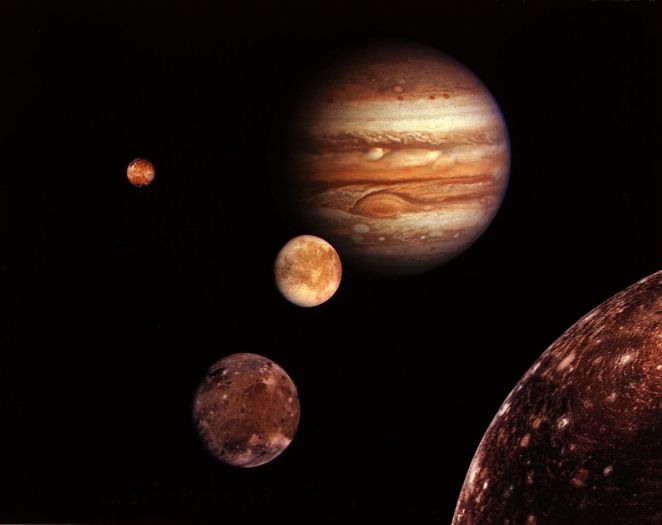 Well, I was SORT of successful last week in photographing Scorpius. But between the summer weather (hazy, hot, humid, and thunderstorms just about every afternoon), it hasn’t been a great week for stargazing. I got a brief window between clouds one night and shot some pictures of Scoripus’s “head”, they’re posted here. M4 is pretty easily visible, M80 is lost behind a cloud – but Antares looks pretty good, and I managed to get a telescope on both Saturn and Jupiter.
Well, I was SORT of successful last week in photographing Scorpius. But between the summer weather (hazy, hot, humid, and thunderstorms just about every afternoon), it hasn’t been a great week for stargazing. I got a brief window between clouds one night and shot some pictures of Scoripus’s “head”, they’re posted here. M4 is pretty easily visible, M80 is lost behind a cloud – but Antares looks pretty good, and I managed to get a telescope on both Saturn and Jupiter.
 The only other night it wasn’t clouded up, the moon was full – beautiful in its own right (The Thunder Moon!), but given the haze everything was pretty well washed out.
The only other night it wasn’t clouded up, the moon was full – beautiful in its own right (The Thunder Moon!), but given the haze everything was pretty well washed out.
So with the moon lingering around, I’m not going to talk much about the next Zodiac constellation (Sagittarius), or the Milky Way. We’ll let it get darker before paying attention to that (maybe next week).
Jupiter — time is running out on good viewing of our solar system’s largest planet, and the four Galilean moons. Jupiter will soon slip away into the glare of sunset and become a day-time object. So go find it while you can. It’s still the brightest object in the evening sky (aside from the moon), slightly west of south as it gets dark. Aside from seeing the planet itself, watch the moons – they’re easily visible with even a small telescope. And they MOVE, quickly, such that viewing from one night to the next has pretty dramatic differences. Io, the innermost of the big four, takes a little less than 2 Earth-days to zip around Jupiter. Europa makes the trip in about 3 and a half.

Jupiter and the Galilean moons – as viewed with a little Astro-Photoshopping. They are (from Jupiter outward) Io, Europa, Ganymede, Callisto.
Recall that watching Jupiter’s moons move night after night was ground-breaking – the oscillation that Galileo observed convinced him that there were things out there orbiting a planet – heresy in the time of Earth-centric thinking. There are several handy charts out there that show which moons you’re looking at. I like this one, as it depicts the moons along a time-axis in a way that makes it easy to visualize the actual orbits.
On Monday, when our family got a look, the two outer moons were stretched way out on the western side of Jupiter, and the inner two were just the opposite, tucked in close on the east. I was able to set up a panoramic scene by fixing the scope and letting Earth’s rotation move the planet across the field of view. Starting with just Callisto, it would slide across frame and Ganymede would enter stage right. Then just about the time Callisto slid out of view, the glare of Jupiter itself would light up the eyepiece, with Io and Europa tucked in so close as to be hard to resolve from each other, and from Jupiter itself. Everybody in my family saw Europa first before spotting Io in close.
The other fun thing to watch for this week, movement-wise, is Venus. You have to get up early in the morning, and look East – Venus is now playing the part of bright “Morning Star”, but above it, to the west, are the Pleiades, the open cluster in Taurus we talked about back in the winter, now reappearing before dawn. Below Venus are the Hyades, the V-shaped asterism in Taurus’s face, and the bright red giant Aldebaran.

Venus, the Pleiades and Aldebaran – This view is just before 5am EDT on Monday, but watch Venus move through the Hyades this week.
The neat part here is that the Pleiades and Aldebaran form a nice set of reference points against which you can see Venus move eastward, night after night. This week, Venus crosses the line between these points and plows through the Hyades and quite close to Aldebaran on Thursday, sliding east through the Zodiac.
So – quick quiz, since our winter stars have gone all the way around and appearing before dawn again. What will be the next major constellation visible rising in the east, behind Taurus? Venus will cross into it as it leaves Taurus (Hint: it’s NOT a Zodiac constellation). If you can name the next Zodiac constellation too, that’ll be extra credit. 😉
Get Out There
Troy
flying-squirrel.org

Very nice picture of Scorpius with excellent color in Antares.
LikeLike
I’m guessing Venus is heading into Orion. I guessing that based on your hint, because Orion is very close to being a Zodiac constellation but it’s not normally counted as one.
LikeLiked by 1 person
Gemini!
Great post. I touched on the morning sky today, but I think you did a better job of it. 😀
LikeLike